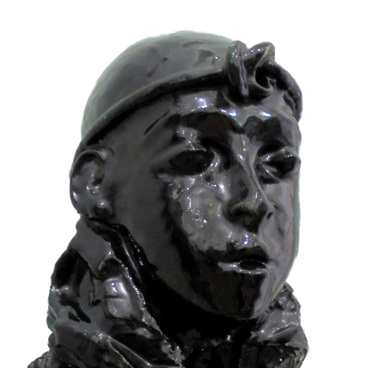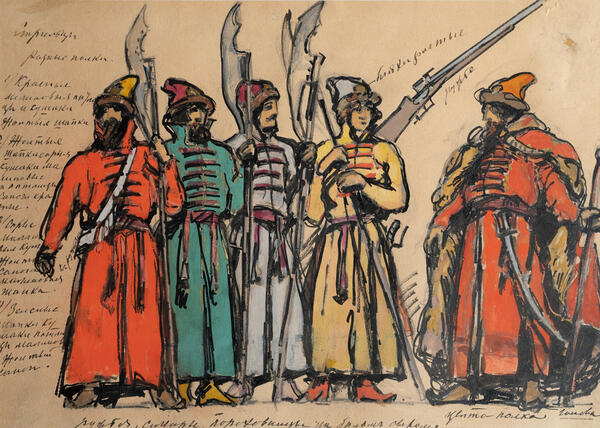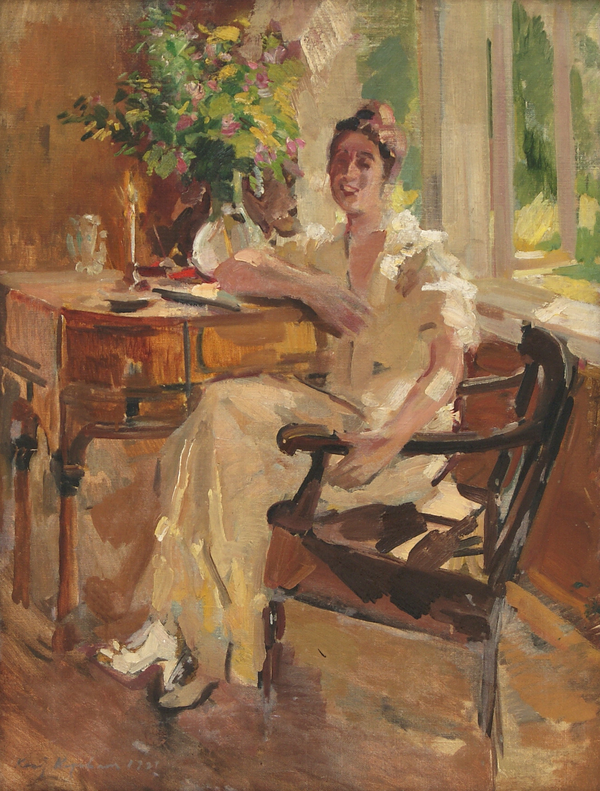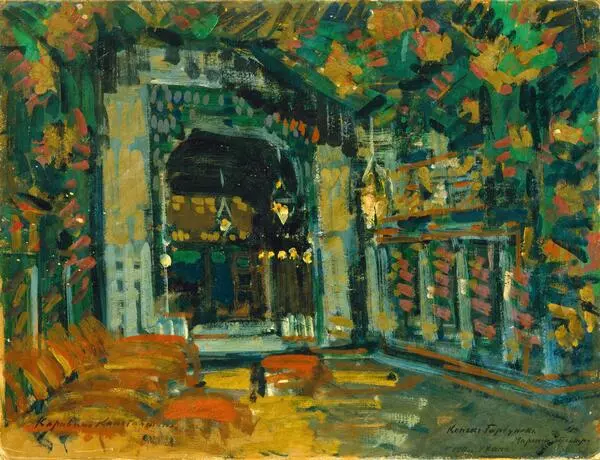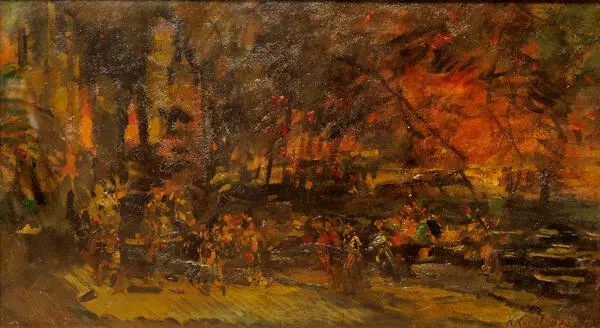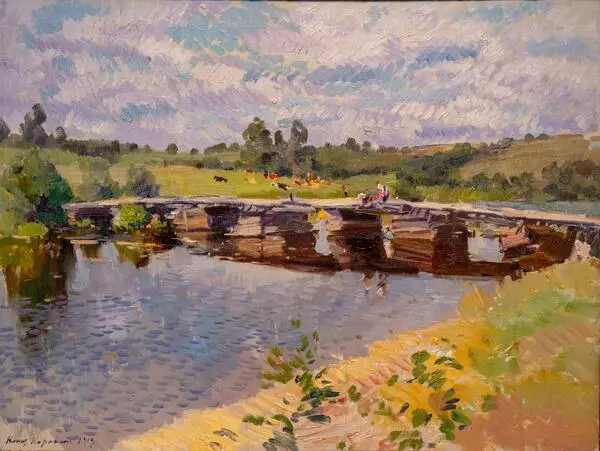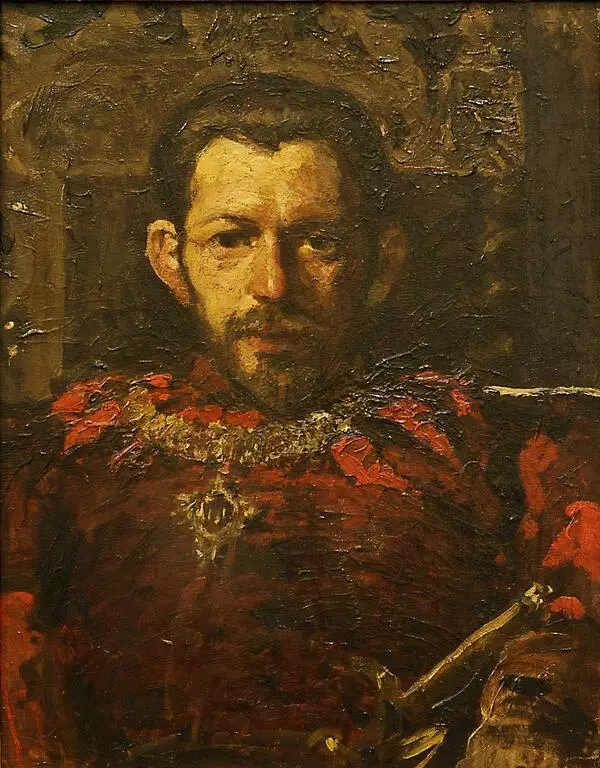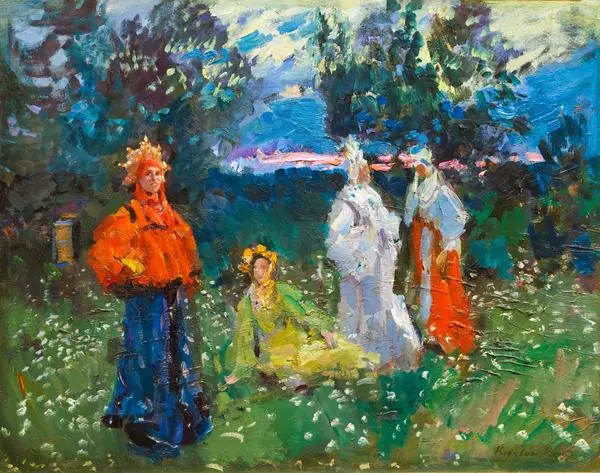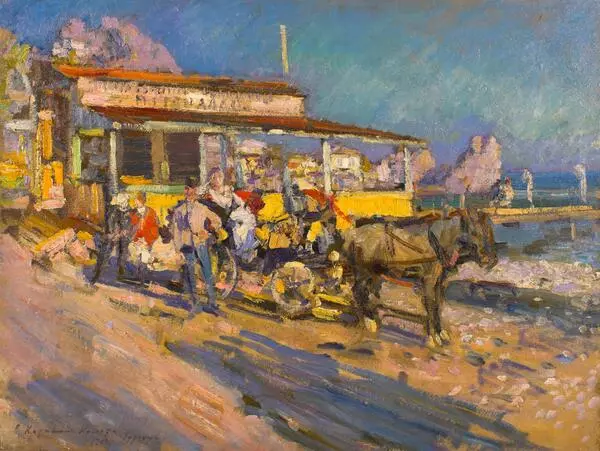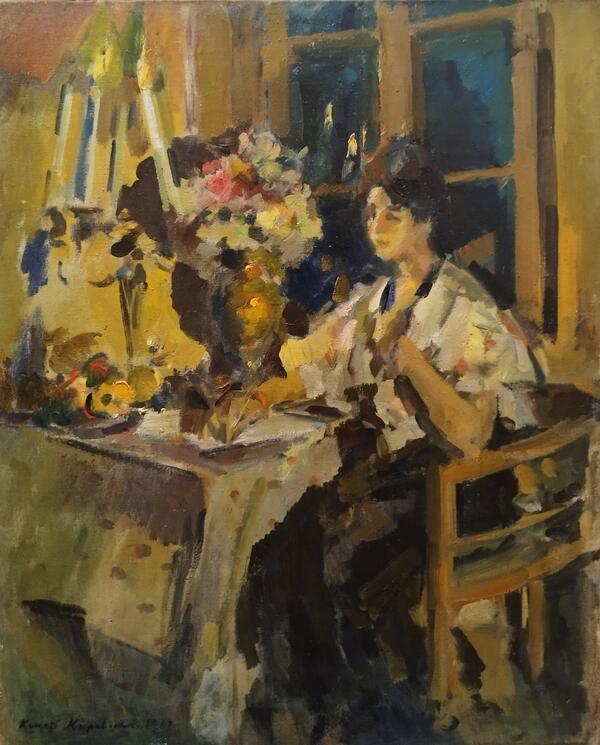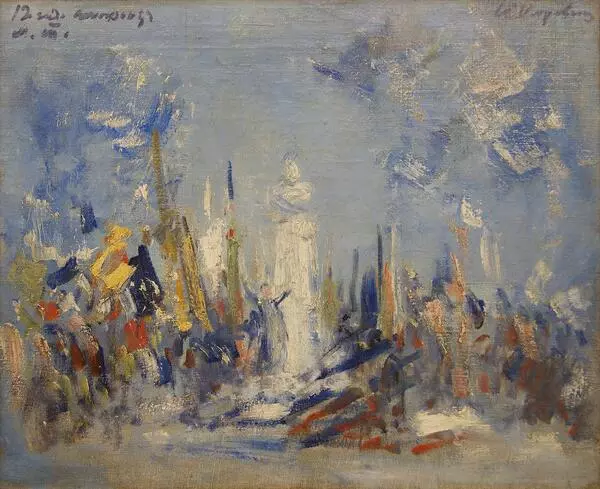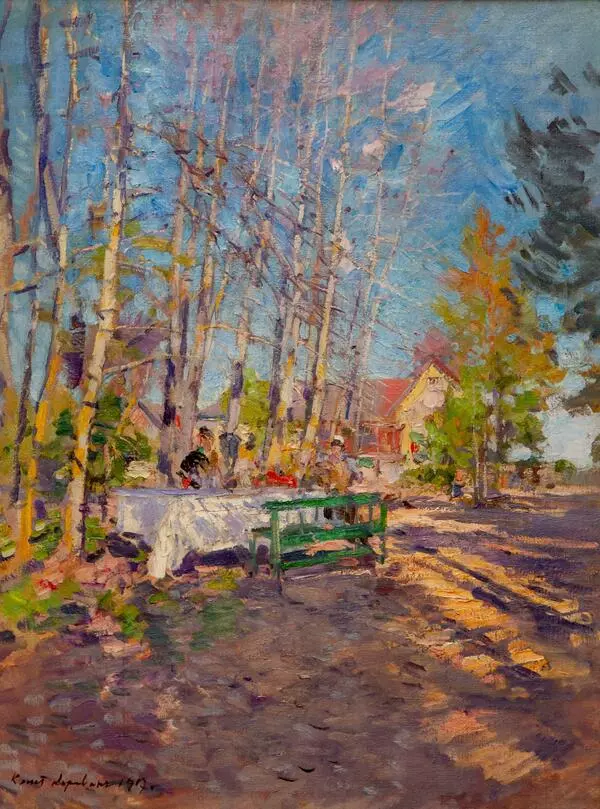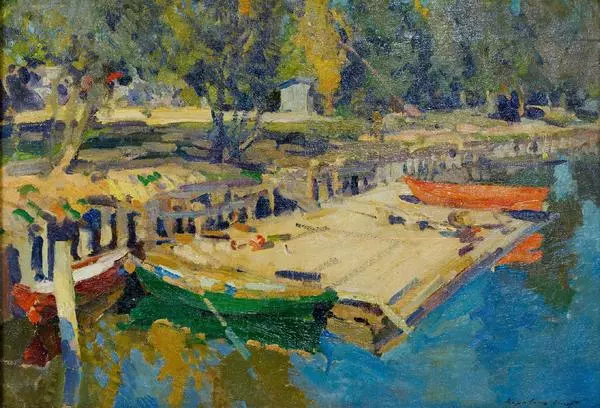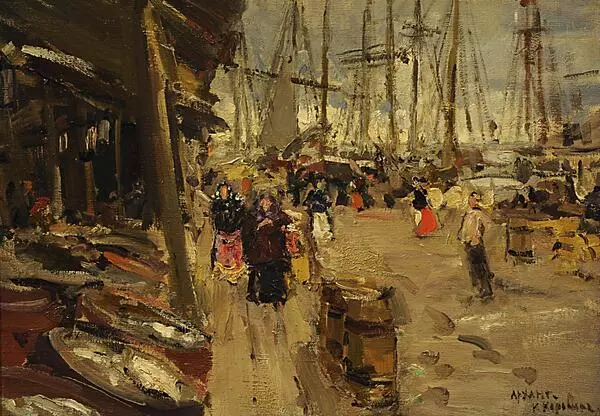Konstantin Alekseyevich Korovin was often called ‘the first Russian impressionist’. In fact the artist used to visit France, the country where this artistic movement was born and actively developing. Korovin visited Paris in 1887, 1892, and 1893. There he was able to get familiar with the works of such well-known members of the movement as Claude Monet, Pierre-Auguste Renoir, Alfred Sisley, Camille Pissarro and others. Of course, they all made a huge impression on the artist, their artistic language surprisingly correlated with the artist’s way of thinking. Korovin would return to Paris many times. The city landscapes painted by Korovin in France are almost undistinguishable from the impressionists’ works. It is interesting that Korovin was very good not only at the day scenes, but especially at the evening and night city views when the streets were lit with the lamps and the night cafes were overflowing with music.
Starting from the 1900s Konstantin Korovin worked a lot with the theatres. He created the theatrical scenery and the sketches for costumes. The artist worked for the plays in the Bolshoi, Mariinsky theatre and also for La Scala in Milan.
The second important part of the artist’s creative life is connected with the Crimea. There, in the town of Gurzuf, he bought a country house in the beginning of the 20th century. He called it “Salambo” in the name of the recently finished ballet by Andrey Fyodorovich Arends with the same name inspired by Gustave Flaubert’s novel. The country house was built based on the artist’s design. He used to live and work here for extensive periods of time in 1910-1917. Such painters as Ilya Repin, Vasily Surikov, writers Maxim Gorky, Alexander Kuprin, Dmitry Mamin-Sibiryak, singer Feodor Chaliapin visited him there. In 1913 Korovin’s family met with a great misfortune. His son was hit by a tram and became disabled. The artist took the news heavily and departed to Gurzuf, where he stayed for a long time.
There Korovin created a lot of works featuring Crimean roses, cypresses, marine terminals, and the sun-drenched southern streets. These paintings are filled with bright colours and the sunlight. The painting titled ‘Evening’ has a different mood. The warm southern night is depicted here. The windows are wide open; the moon glade is seen through them on the bright blue surface of the night sea. A bunch of roses is on the table. Near the soft flower buds is a female silhouette with a guitar. By the pictorial manner with its quick and bright brush strokes this painting can be attributed to impressionism. Along with his French city landscapes the artist managed to create a ‘night’ painting and catch the spirit of this time of day. Only here, on the contrary with the lively Parisian boulevards, the artist created a cozy and private atmosphere.

